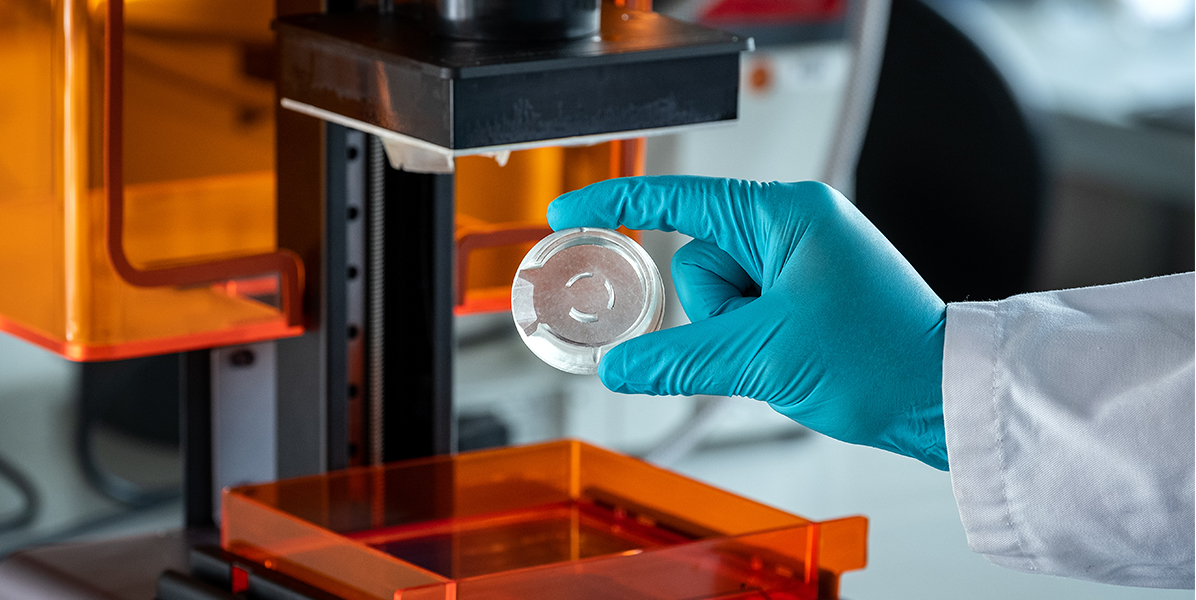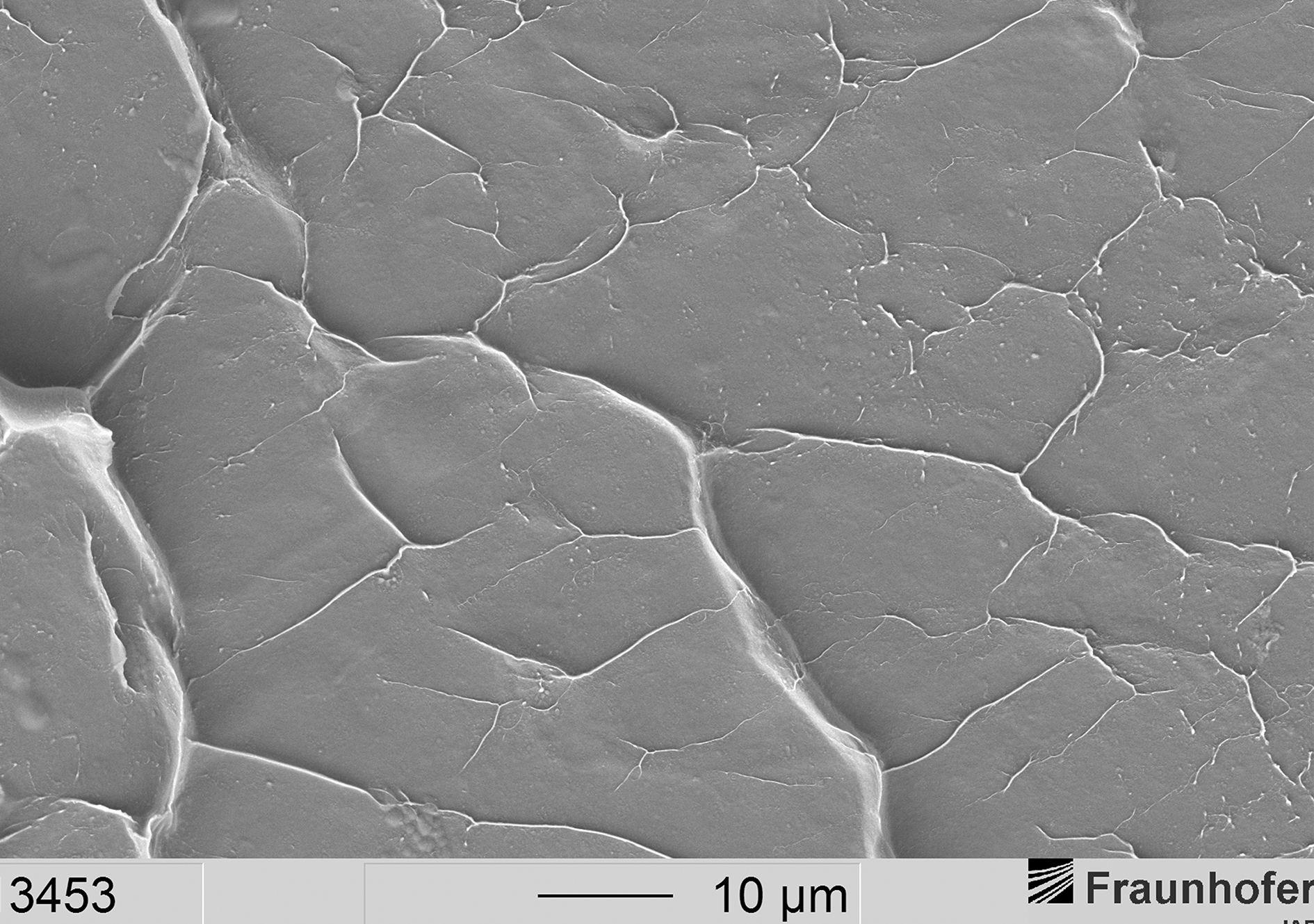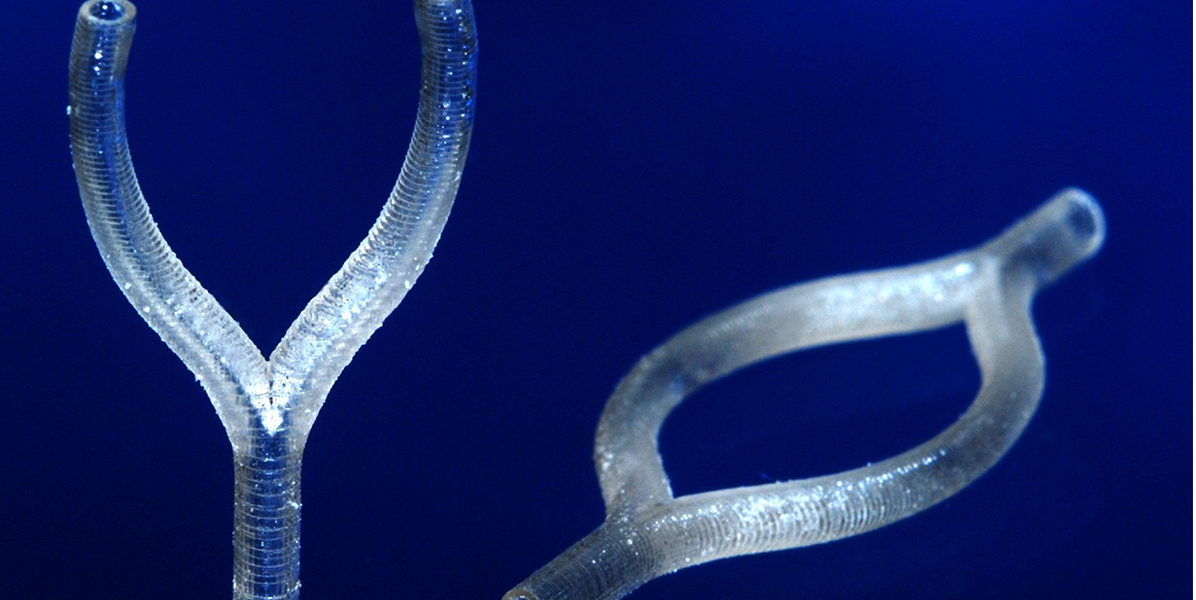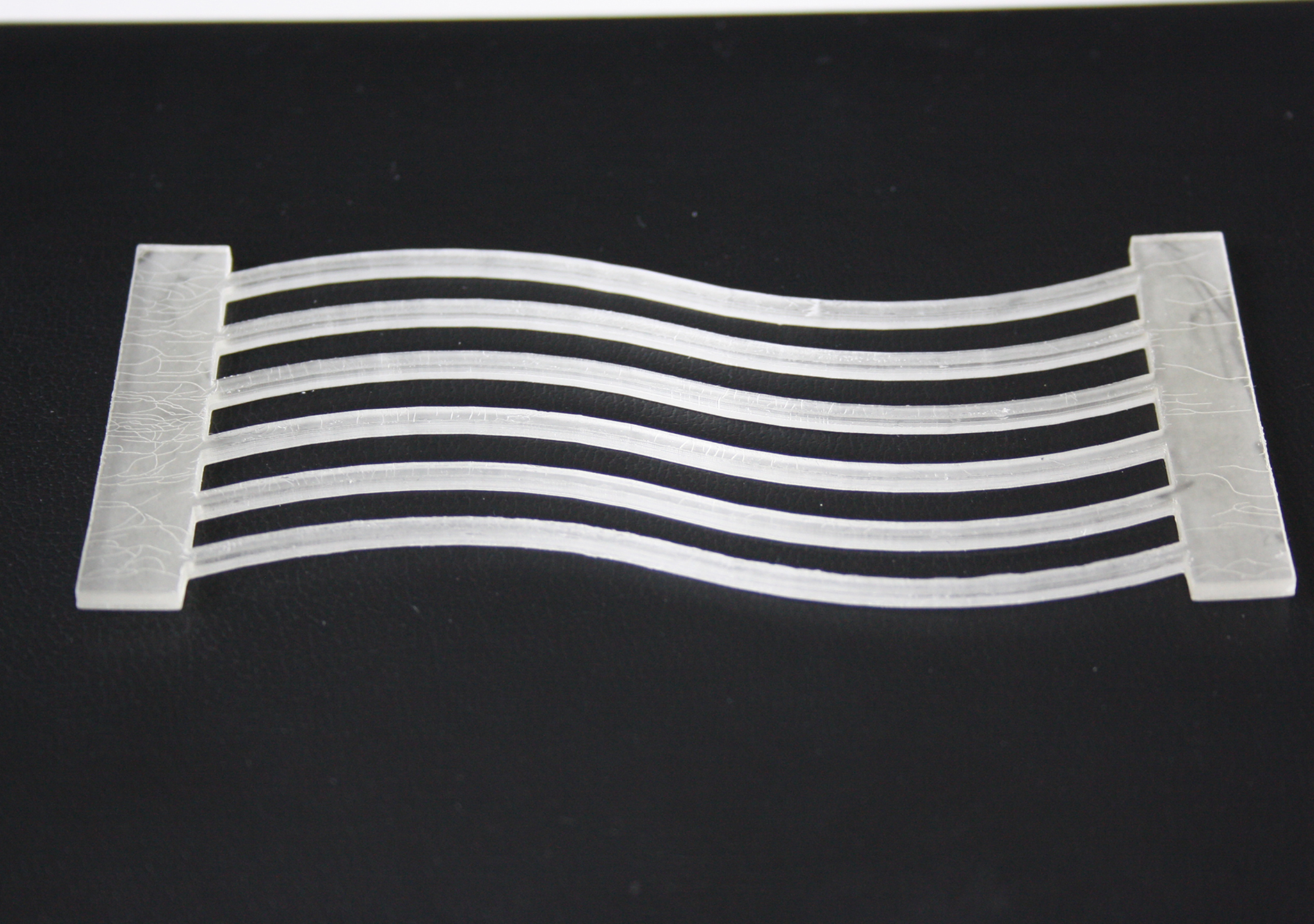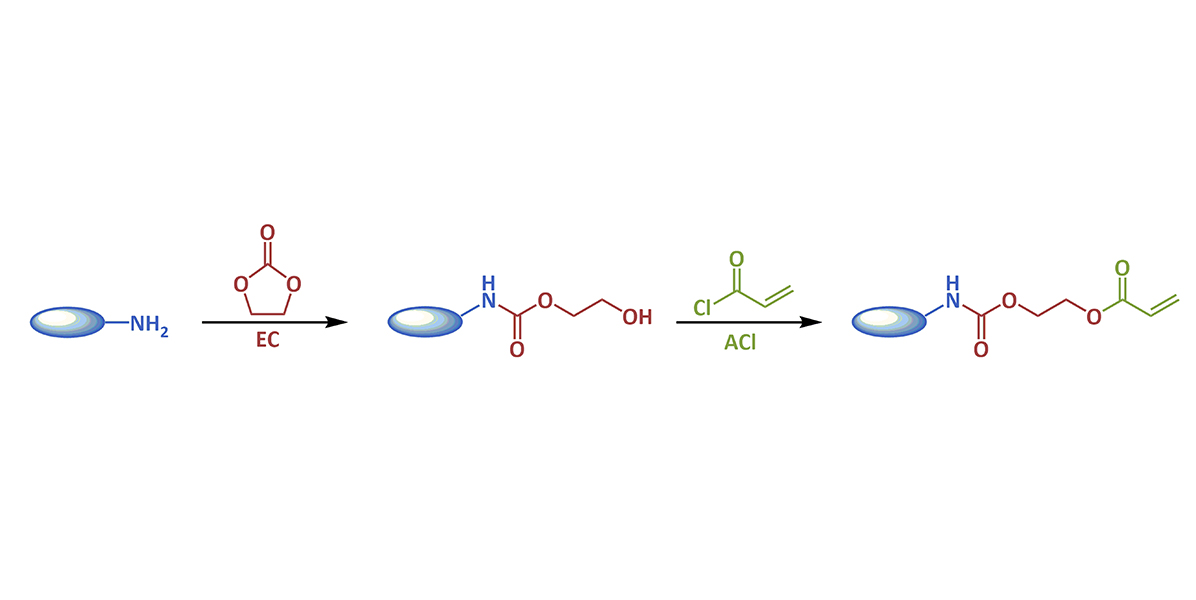Our expertise: material development for 3D printing
At Fraunhofer IAP, we develop polymers for additive manufacturing processes. In recent years, our researchers have specialized in material development for light-based curing technologies. Thanks to our own printers, we are independent of subsequent production prints.
We develop materials for medical implants
We develop biocompatible materials for additive processes with elastic and biomimetic behavior. Prostheses and implants can be adapted to the injuries of patients with the latest technologies. In the case of soft tissue dislocations, for example, insulation capsules with an individual shape can be printed, in which blood-supplied tissue can grow back inside the body.
The materials and 3D printing technologies must meet very high medical requirements. At Fraunhofer IAP, researchers combine their comprehensive material knowledge with technical know-how to achieve the best solutions for the development of medical applications.
Because we care about the future: Sustainable chemistry
The Society of German Chemists describes sustainable Chmie as "the key discipline that will ensure the future viability of industrial society." In our development of medical implants, this means: We develop 3D printed medical implants based on sustainable inks. We formulate this 3D printing ink on the basis of sustainable chemistry. For example, we develop biodegradable implants and implants based on renewable materials. We avoid the use of toxic or critical raw materials.
